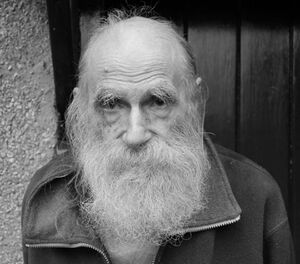George Spencer-Brown (nonfiction): Difference between revisions
No edit summary |
|||
| Line 8: | Line 8: | ||
<gallery> | <gallery> | ||
File:Laws of Form by George Spencer-Brown (front cover).png|Front cover of ''Laws of Form (nonfiction)|Laws of Form]]''. | |||
</gallery> | </gallery> | ||
Revision as of 04:19, 3 April 2020
George Spencer-Brown (2 April 1923 – 25 August 2016) was an English polymath best known as the author of Laws of Form.
He described himself as a "mathematician, consulting engineer, psychologist, educational consultant and practitioner, consulting psychotherapist, author, and poet".
Laws of Form, at once a work of mathematics and of philosophy, emerged from work in electronic engineering Spencer-Brown did around 1960, and from lectures on mathematical logic he later gave under the auspices of the University of London's extension program. First published in 1969, it has never been out of print. Spencer-Brown referred to the mathematical system of Laws of Form as the "primary algebra" and the "calculus of indications"; others have termed it "boundary algebra." The primary algebra is essentially an elegant minimalist notation for the two-element Boolean algebra, very similar to formal systems that Charles Sanders Peirce devised in work written in the 1880s and 90s (see entitative graph and existential graph), but in some cases not published until after the first edition of Laws of Form.
In the News
Fiction cross-reference
Nonfiction cross-reference
- Box calculus (nonfiction) - TO_DO
- Proving the equivalency of all syllogisms using object logic by Armahedi Mahzar
- Charles Sanders Peirce (nonfiction)
- Mathematics (nonfiction)
External links
- G. Spencer-Brown @ Wikipedia
- Tao of form @ Blogspot: Unified Tao
- "Von Foerster saw Spencer-Brown as similar to Wittgenstein (of which he was the nephew) and Don Juan, Carlos Castaneda's teacher, in that all three shared "a state of melancholy that befalls those who know that they know"."
- Laws of Form page @ Facebook

![Laws of Form]].](/w/images/thumb/3/37/Laws_of_Form_by_George_Spencer-Brown_%28front_cover%29.png/93px-Laws_of_Form_by_George_Spencer-Brown_%28front_cover%29.png)